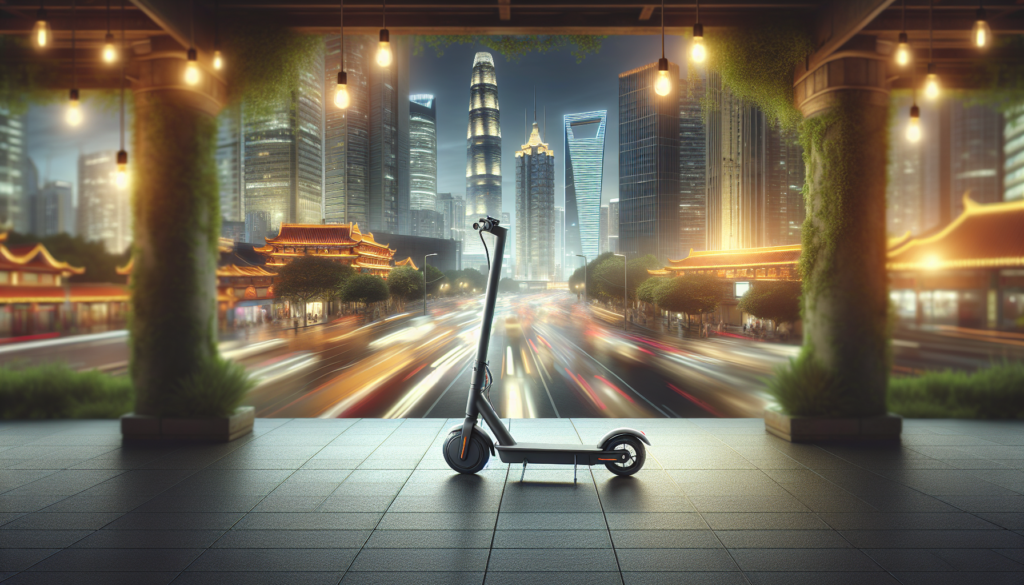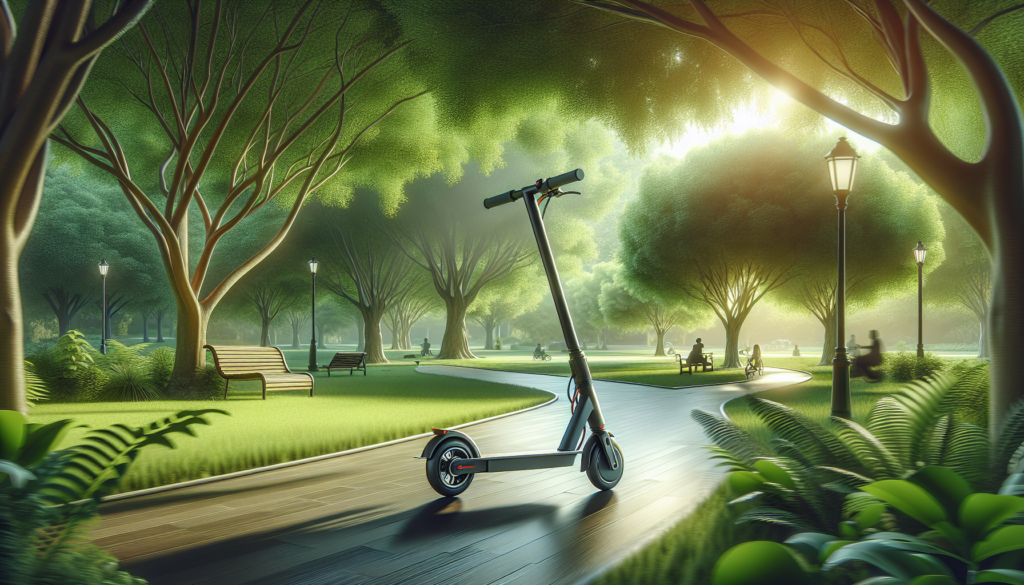
In recent years, electric scooters have emerged as a popular mode of transportation, but their potential for food delivery in Malaysia is gaining significant attention. With the bustling streets of Petaling Jaya and Kuala Lumpur, the need for efficient and eco-friendly delivery options has never been more critical. Electric scooters offer a viable solution, allowing delivery riders to navigate congested traffic while minimizing their carbon footprint. However, it is essential to weigh the pros and cons of utilizing electric scooters for food delivery.
While they provide an innovative approach to logistics in densely populated urban areas, challenges such as battery life and safety regulations must also be considered. This exploration of electric scooters as a food delivery option aims to shed light on their benefits and drawbacks, paving the way for a more sustainable future in Malaysia’s delivery ecosystem.
Understanding the Demand for Food Delivery in Urban Malaysia
In urban Malaysia, particularly in densely populated areas like Petaling Jaya and Kuala Lumpur, the demand for food delivery services has surged remarkably. As more people turn to online food ordering for convenience, especially during peak hours or inclement weather, the need for efficient and adept delivery options becomes critical. The bustling streets and frequent traffic congestion in these metropolitan regions create challenges for traditional delivery methods, making electric scooters a compelling alternative. Their compact size allows riders to navigate through tight spaces, avoiding traffic jams and effectively reaching customers in a prompt manner. While electric scooters present a viable solution for food delivery, they come with both pros and cons.
On the positive side, they promote eco-friendliness by reducing carbon emissions and often incur lower operating costs compared to fuel-based vehicles. Additionally, delivery riders can maneuver quickly through city traffic, improving overall delivery times. However, the limitations of electric scooters, such as battery range and the potential for adverse weather conditions, pose challenges that need to be addressed. Understanding these factors is crucial in evaluating the overall efficacy of electric scooters for food delivery in the Malaysian urban landscape.
The Benefits of Using Electric Scooters for Food Delivery
Electric scooters are emerging as a viable and efficient option for food delivery in Malaysia, particularly in densely populated urban areas like Petaling Jaya and Kuala Lumpur. These electric vehicles can navigate through congested streets and tight alleyways with ease, minimizing delivery times and improving service efficiency. Additionally, electric scooters contribute to reducing carbon emissions, aligning with Malaysia’s push towards more sustainable transportation methods. Their compact size allows delivery personnel to park conveniently near restaurants and customers, enhancing overall convenience for both parties. This greener delivery option not only benefits the environment but also appeals to eco-conscious consumers looking for sustainable alternatives.
However, the use of electric scooters for food delivery does come with its challenges. Safety is a primary concern, as delivery riders are exposed to traffic and unpredictable road conditions. Moreover, battery life and scooter range can be limiting factors if not adequately managed, especially during peak delivery hours. Weather conditions can also impact operations, as heavy rain or strong winds may deter riders from venturing out. Balancing these pros and cons will be key for restaurants and delivery services considering electric scooters as part of their existing operations in Malaysia’s fast-paced food delivery market.
Electric Scooters vs. Traditional Delivery Methods
Electric scooters are emerging as a viable alternative to traditional delivery methods for food delivery in Malaysia, particularly in densely populated cities like Petaling Jaya and Kuala Lumpur. One of the key advantages of using electric scooters is their ability to navigate through congested traffic with ease, significantly reducing delivery times. Their compact design allows delivery riders to access narrow lanes and alleyways that are often off-limits to larger delivery vehicles. Moreover, electric scooters produce zero emissions, contributing to a more environmentally friendly approach to food delivery in urban areas. This aligns well with Malaysia’s growing emphasis on sustainability and reducing carbon footprints.
On the flip side, while electric scooters offer several benefits, there are also some drawbacks to consider. The limited range of electric scooters can pose a challenge for longer-distance deliveries, potentially affecting order fulfillment for restaurants located further away from their customers. Additionally, adverse weather conditions may hinder the performance and safety of scooter deliveries, making it essential for riders to be cautious during heavy rain or storms. Furthermore, the infrastructure for electric scooters, such as charging stations and designated parking spots, is still developing, which could impact the effectiveness of electric scooter delivery in certain locations. Overall, the pros and cons must be weighed carefully, but the growing trend surely indicates a promising future.
Challenges and Limitations of Food Delivery on Electric Scooters
While electric scooters present a modern solution for food delivery in Malaysia, especially in bustling urban areas like Petaling Jaya and Kuala Lumpur, there are several challenges and limitations to consider. One significant hurdle is the infrastructure; many cities might not have dedicated lanes or a safe environment for scooter users, increasing the risks of accidents. Additionally, the battery life of electric scooters is a concern, particularly for longer delivery routes or during peak hours when multiple deliveries could be involved. Factors like unpredictable weather and heavy traffic can further complicate timely deliveries, impacting customer satisfaction.
Another limitation pertains to load capacity; electric scooters have restricted carrying capabilities, which may not accommodate larger food orders or bulky items. Moreover, the lack of stringent regulations in Malaysia for scooter riders can lead to safety issues, both for the riders and pedestrians. Some restaurants may be hesitant to embrace this new delivery method due to concerns about the condition in which their food arrives. Despite these challenges, the eco-friendly nature of electric scooters and their cost-effectiveness make them a compelling option, provided that potential limitations are addressed with the right strategies and infrastructure improvements.
Regulatory Considerations for Electric Scooter Delivery Services

Regulatory considerations play a critical role in determining the viability of electric scooters for food delivery services in Malaysia, particularly in urban settings like Petaling Jaya and Kuala Lumpur. Local authorities must establish clear guidelines that govern the use of electric scooters on public roads and sidewalks, ensuring the safety of both riders and pedestrians. Regulations may include requirements for licensing, speed limits, and designated lanes for electric scooters to mitigate risks associated with their operation. Furthermore, food delivery companies must obtain necessary permits and adhere to health and safety standards when utilizing electric scooters, which could enhance the legitimacy of such services across Malaysian cities.
The advantages of implementing electric scooters for food delivery are numerous, such as reduced traffic congestion and lower carbon emissions, making them an environmentally friendly option. However, it is essential to consider the potential downsides, including safety issues related to road traffic and the infrastructure challenges that might arise without appropriate lanes for these scooters. Balancing these pros and cons while creating a comprehensive regulatory framework could pave the way for electric scooters to thrive as a sustainable food delivery option in Malaysia’s bustling urban centers.
Impact on Traffic Congestion and Urban Mobility
The rise of electric scooters as a viable option for food delivery in Malaysia comes with a significant potential impact on traffic congestion and urban mobility. In densely populated areas like Petaling Jaya and Kuala Lumpur, which are notorious for their heavy traffic and narrow roads, electric scooters offer a nimble and efficient alternative to traditional delivery vehicles. They can easily navigate through tight spaces and crowded streets, ensuring that food reaches customers quickly and safely.
This not only speeds up delivery times but also reduces the number of larger vehicles on the road, contributing to a decrease in overall traffic congestion. This shift could transform urban mobility, creating a more sustainable and less congested environment for both delivery personnel and local residents.
Despite the advantages, there are some drawbacks to consider. The limited range of electric scooters may restrict deliveries to short distances, impacting businesses that operate on a larger scale. Furthermore, safety concerns arise due to the increasing number of scooters on the streets, making it essential for both drivers and pedestrians to remain cautious. Regulatory measures and infrastructure improvements are crucial in ensuring that electric scooters can operate safely alongside other vehicles. Nevertheless, with careful planning and execution, the integration of electric scooters into the food delivery ecosystem could enhance urban mobility significantly.
Safety Measures and Best Practices for Delivery Riders
Safety is paramount for delivery riders using electric scooters in Malaysia, especially in bustling urban areas like Petaling Jaya and Kuala Lumpur. To ensure the safety of both the rider and the food being delivered, it is crucial to equip the scooter with high-quality components and features such as reliable brakes, proper lighting for nighttime riding, and mirrors to maintain visibility.
Riders should also wear protective gear, including helmets, knee pads, and reflective clothing, to minimize the risk of injury in case of accidents. Additionally, educating riders on safe riding practices—such as obeying traffic signals, avoiding distractions, and keeping a safe distance from vehicles—will further enhance safety during deliveries. Regular maintenance checks on the scooters are also important to ensure they are in optimal working condition.
In addition to individual safety, creating a supportive delivery environment can promote best practices. Delivery companies can implement training programs focused on road safety, traffic regulations, and scooter handling. Encouraging riders to utilize designated bike lanes and parks for delivery pick-ups can also minimize risks associated with crowded streets. Furthermore, using technology to track deliveries and communicate with customers can foster greater accountability and allow for real-time support in emergencies. By instilling a culture of safety and responsibility among delivery riders, the electric scooter can become a reliable and secure option for food delivery in Malaysia.
Future Trends: The Role of Electric Scooters in Malaysia’s Food Delivery Ecosystem
As urban mobility continues to evolve, electric scooters are emerging as a practical solution for food delivery services in densely populated areas of Malaysia, such as Petaling Jaya and Kuala Lumpur. With the rapid growth of the food delivery industry, the need for efficient, cost-effective, and eco-friendly transportation is more pressing than ever. Electric scooters are nimble and can navigate through congested streets, making them ideal for quick deliveries. Their lower operational costs compared to traditional delivery vehicles also make them an attractive option for food businesses looking to maximize profit margins while maintaining speed and reliability.
Moreover, fostering a greener delivery ecosystem can resonate well with environmentally conscious consumers, aligning with Malaysia’s goals of sustainability and reduced carbon emissions. However, while electric scooters present a viable option, they are not without challenges. Factors such as limited range, battery life concerns, and safety issues pose potential setbacks in their widespread adoption for food delivery.
Additionally, infrastructure in Malaysian cities may need to accommodate electric scooters better, with dedicated lanes and charging stations. Balancing the pros, such as cost savings and environmental friendliness, against the cons will be crucial as food delivery services consider integrating electric scooters into their operations. Understanding these nuances will be key to ensuring that these vehicles enhance the food delivery ecosystem in Malaysia effectively.
Final Thoughts on Electric Scooters for Food Delivery

In conclusion, electric scooters present a promising solution for food delivery in Malaysia’s bustling cities, especially in densely populated areas like Petaling Jaya and Kuala Lumpur. The advantages of using electric scooters, such as reduced traffic congestion, lower emissions, and cost-effectiveness, make them an attractive choice for food delivery services looking to optimize their operations.
Furthermore, these scooters can easily navigate narrow streets and crowded areas, allowing riders to deliver food quickly and efficiently, which is crucial in today’s fast-paced environment. However, there are some drawbacks to consider as well. Issues such as battery life, maintenance costs, and safety concerns should be thoroughly examined. Balancing these pros and cons will be vital for businesses contemplating the implementation of electric scooters in their delivery fleet.
Ultimately, with thoughtful planning and consideration of local regulations, together with us at EKO Life MY electric scooters could pave the way for a greener and more efficient food delivery service in Malaysia.

Not enough information here. Hope the full version is out soon.
Hi Kavita, thank you for visiting our blog! We understand your concern for more information. Unfortunately, we can only share a teaser for now, but rest assured that our full article will be out soon. If you have any specific questions or concerns, feel free to reach out to us directly at [email protected] or +60 3-7890 3042. We’re looking forward to sharing more insights with you then.
Was expecting more concrete points. Hopefully, it will be covered in the next post.
Thank you so much for sharing your thoughts, Natalia. We appreciate your feedback and would like to assure you that we’re working on providing more in-depth information in our future posts. We’ll make sure to cover the topics you’re expecting in the next one. In the meantime, if you have any specific questions or concerns, please don’t hesitate to reach out to us via [email protected] or +60 3-7890 3042. We’re here to help.
Interesting. Would love to see more details.
Hi Aisha, thank you for your interest in our bike services! We’re more than happy to provide more details about our affordable pricing, high-quality products, and professional servicing. Please feel free to contact us at [email protected] or give us a call at +60 3-7890 3042. We’d be more than happy to answer any questions you may have.